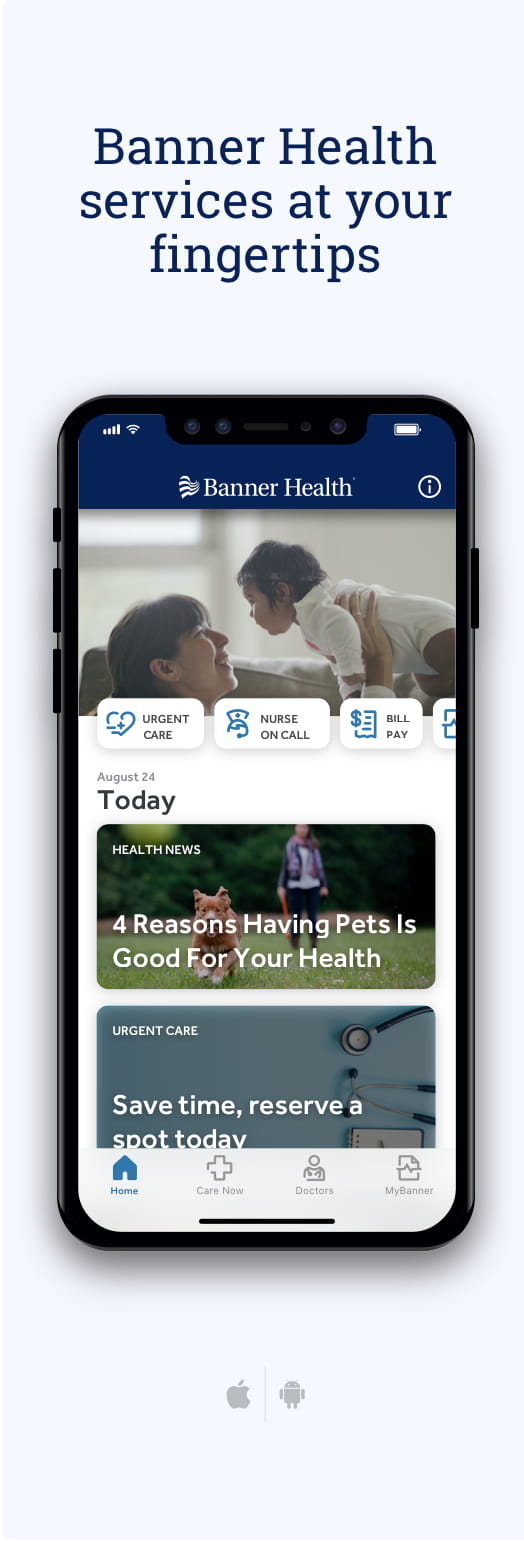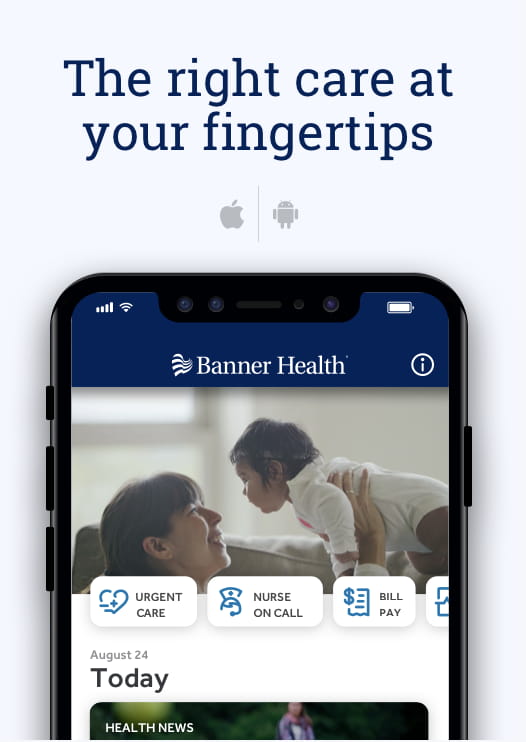¿Alguna vez te has preguntado cómo respira tu cuerpo? No es algo en lo que pensemos todos los días, pero es importante para nuestra salud.
Una forma de medirlo es comprobando el nivel de oxígeno en sangre . Pero ¿qué es exactamente el nivel de oxígeno en sangre y por qué es tan importante?
Continúe leyendo para aprender sobre los niveles de oxígeno en la sangre y las formas de mejorarlos y mantener la salud general.
¿Cuál es el nivel de oxígeno en la sangre ?
El nivel de oxígeno en sangre , también conocido como saturación de oxígeno (Sp02), mide la cantidad de oxígeno que transportan sus sangre rojos.
“El oxígeno es esencial para que el cuerpo funcione correctamente”, afirmó la Doctor.María Herrera , especialista en medicina de cuidados intensivos y neumóloga de Banner Health. “Cada célula del cuerpo necesita oxígeno para producir energía y realizar sus tareas”.
Mantener niveles saludables de oxígeno en la sangre también ayuda al funcionamiento del cerebro , la salud del corazón y un sistema inmunológico saludable.
Una vez que el cuerpo utiliza el oxígeno, se crea dióxido de carbono como producto de desecho. La sangre transporta este dióxido de carbono de regreso a los pulmones, desde donde lo exhalas por la boca y la nariz. Este intercambio constante de oxígeno y dióxido de carbono es importante para que el cuerpo funcione sin problemas.
¿Cómo se mide el nivel de oxígeno en la sangre ?
Los niveles de oxígeno en sangre se miden generalmente con un oxímetro de pulso . Este pequeño dispositivo se coloca en el dedo y utiliza luz para calcular la cantidad de oxígeno en la sangre. Es rápido, indoloro y brinda resultados en segundos.
“En algunos casos, los proveedores de atención médica pueden utilizar un análisis de sangre llamado sangre arterial (ABG) para obtener una medición más precisa”, dijo el Dr. Herrera. “Esta prueba también analiza el equilibrio ácido-base en la sangre, también conocido como pH. Demasiado o muy poco ácido en la sangre puede ser perjudicial”.
¿Qué significan los números?
El nivel de oxígeno en sangre se mide como porcentaje. El nivel promedio suele oscilar entre el 95 % y el 100 %, lo que significa que entre el 95 % y el 100 % de los sangre rojos transportan oxígeno.
Es importante tener en cuenta que estos números pueden variar dependiendo de tu edad, condiciones de salud, color de piel e incluso la altitud en la que vives.
“Los niveles inferiores al 90% se consideran bajos y pueden indicar una afección llamada hipoxemia, lo que significa que el cuerpo no está recibiendo suficiente oxígeno”, explicó el Dr. Herrera.
La hipoxemia puede provocar tos y sibilancia, pero otros síntomas pueden incluir:
- Dificultad para respirar
- Respiración rápida
- Dolor en el pecho
- Confusión
- Dolores de cabeza
- Mareo
- Cansado o fatigado
Si experimenta alguno de estos síntomas, debe comunicarse con su proveedor de atención médica de inmediato o acudir a la sala de emergencia o centro de urgencias más cercana para ser evaluado.
¿Qué causa los niveles bajos de oxígeno en la sangre ?
Ciertas condiciones de salud pueden provocar niveles bajos de oxígeno en sangre , entre ellas:
- Enfermedad pulmonar obstructiva crónica (EPOC): este grupo de enfermedades pulmonares dificulta la respiración y reduce los niveles de oxígeno.
- Asma: Los ataques de asma graves pueden reducir los niveles de oxígeno en la sangre .
- Enfermedad cardíaca: afecciones como la insuficiencia cardíaca pueden reducir los niveles de oxígeno en la sangre.
- Apnea del sueño: esta afección provoca que usted deje de respirar brevemente durante el sueño, lo que reduce sus niveles de oxígeno en sangre durante la noche.
- Fibrosis quística: esta afección provoca la acumulación de mucosidad espesa y pegajosa en los pulmones, lo que dificulta la respiración y reduce los niveles de oxígeno.
- Anemia: Un recuento bajo de sangre rojos, o hemoglobina, reduce la capacidad de la sangre para transportar oxígeno.
- Infecciones respiratorias: afecciones como la neumonía y el COVID-19 pueden reducir los niveles de oxígeno en sangre .
Los eventos ambientales y situacionales también pueden afectar los niveles de oxígeno en sangre , como:
- Estar a mayor altitud
- De fumar
- Medicamentos como opioides y benzodiazepinas.
Monitoreo de sus niveles de oxígeno en sangre
Medir los niveles de oxígeno con un oxímetro de pulso puede ser una buena idea si tiene una afección médica subyacente que pueda afectar los niveles de oxígeno y experimenta síntomas como dificultad para respirar. Asegúrese de seguir las instrucciones cuidadosamente para obtener lecturas precisas.
Algunos de los últimos dispositivos de fitness portátiles también miden los niveles de oxígeno en sangre . Dispositivos como el Apple Watch, el Samsung Galaxy Watch y algunos dispositivos Fitbit y Garmin lo registran desde la muñeca. Estos dispositivos deben usarse con algunas advertencias.
“Existe una gran variabilidad en la forma en que estos dispositivos miden los niveles de oxígeno y la FDA no ha aprobado estos métodos”, dijo el Dr. Herrera. “Siempre que compares los resultados con los de un dispositivo aprobado por la FDA, no hay problema”.
Si bien los oxímetros de pulso generalmente son confiables, algunos factores también pueden afectar su precisión:
- Esmalte de uñas y uñas postizas: el esmalte de uñas de color oscuro, principalmente negro, verde o azul, puede afectar el sensor de luz del oxímetro de pulso. De manera similar, las uñas postizas también pueden afectar las mediciones. Se recomienda quitarse el esmalte y las uñas postizas cuando se utiliza un oxímetro de pulso de dedo para obtener una lectura más precisa.
- Tono de piel más oscuro: las investigaciones han demostrado que los oxímetros de pulso a veces pueden brindar lecturas menos precisas para las personas con tonos de piel más oscuros . Es importante tener esto en cuenta y buscar asesoramiento médico si tiene inquietudes.
- Movimiento: el movimiento excesivo puede provocar lecturas inexactas. Intente permanecer inmóvil durante la medición.
Si tiene inquietudes sobre sus niveles de oxígeno en sangre , siempre es mejor hablar con su médico. Él puede brindarle una medición más precisa y ayudar a determinar la causa de los niveles bajos. Si experimenta síntomas como dificultad para respirar, dolor en el pecho o confusión, llame al 911 y vaya al departamento de emergencias más cercano.
Cómo mejorar los niveles de oxígeno en sangre
Si su nivel de oxígeno en sangre es bajo, hay varias cosas que puede hacer para mejorarlo:
- Practica la respiración profunda: los ejercicios de respiración profunda o la respiración profunda lenta pueden ayudar a aumentar la cantidad de oxígeno en la sangre.
- Manténgase activo: el ejercicio regular aumenta la resistencia y desarrolla masa muscular, lo que mejora su capacidad para realizar tareas y actividades.
- Deje de fumar: fumar daña los pulmones y reduce los niveles de oxígeno en sangre . Dejar de fumar puede ayudar a mejorar los niveles.
- Use oxígeno suplementario: si su proveedor ha dicho que califica para recibir oxígeno suplementario, esto puede ayudar a garantizar que reciba el oxígeno que necesita.
- Manténgase hidratado: beber mucha agua puede ayudar a que su sangre transporte oxígeno de manera más eficiente.
- Mantenga una dieta saludable: Los alimentos ricos en hierro, como las verduras de hoja verde y las carnes magras, previenen la anemia y permiten que la sangre transporte oxígeno a los órganos y tejidos.
- Bajar de peso: el exceso de peso y la obesidad, especialmente alrededor del abdomen, pueden comprimir físicamente los pulmones, lo que dificulta su expansión completa y la absorción de oxígeno. Bajar de peso reduce esta presión, lo que permite que los pulmones funcionen mejor.
Conclusión
Comprender el nivel de oxígeno en sangre es importante para mantener la salud y el bienestar. Si toma medidas para mejorar los niveles de oxígeno y controla los cambios, podrá asegurarse de que su cuerpo reciba el oxígeno que necesita para funcionar de forma óptima.
Recuerde, si tiene inquietudes, consulte a su proveedor de atención médica o a un especialista de Banner Health .


